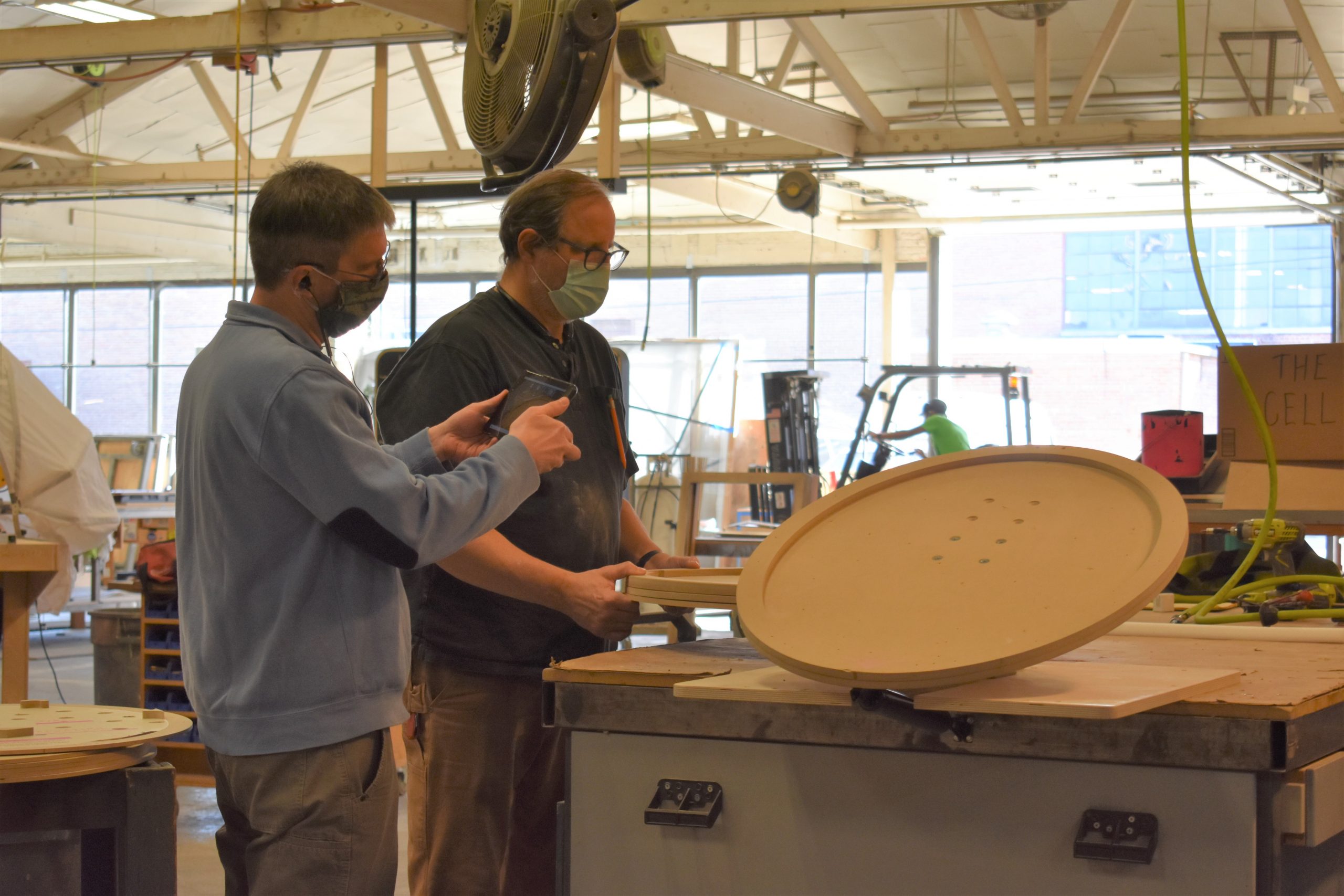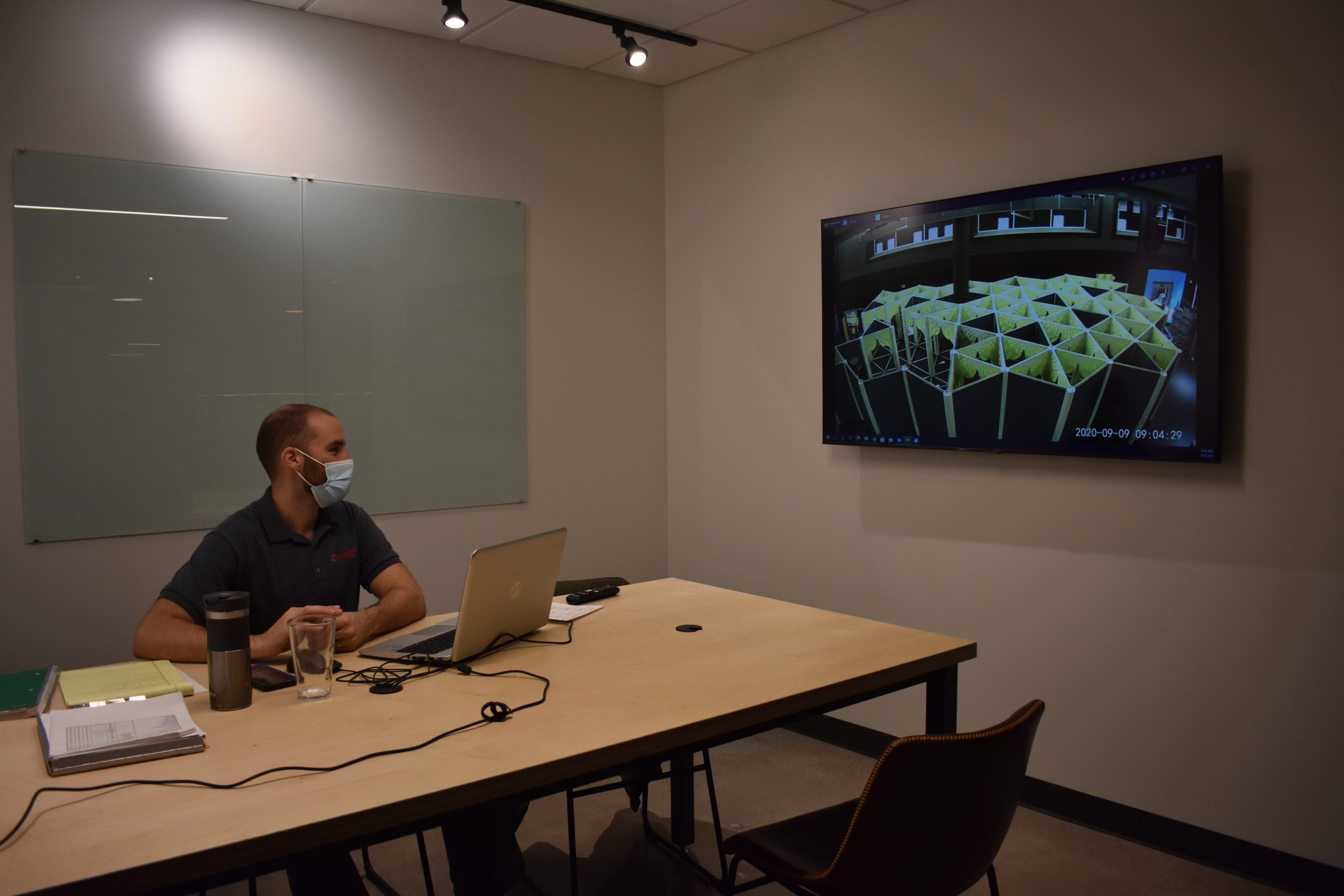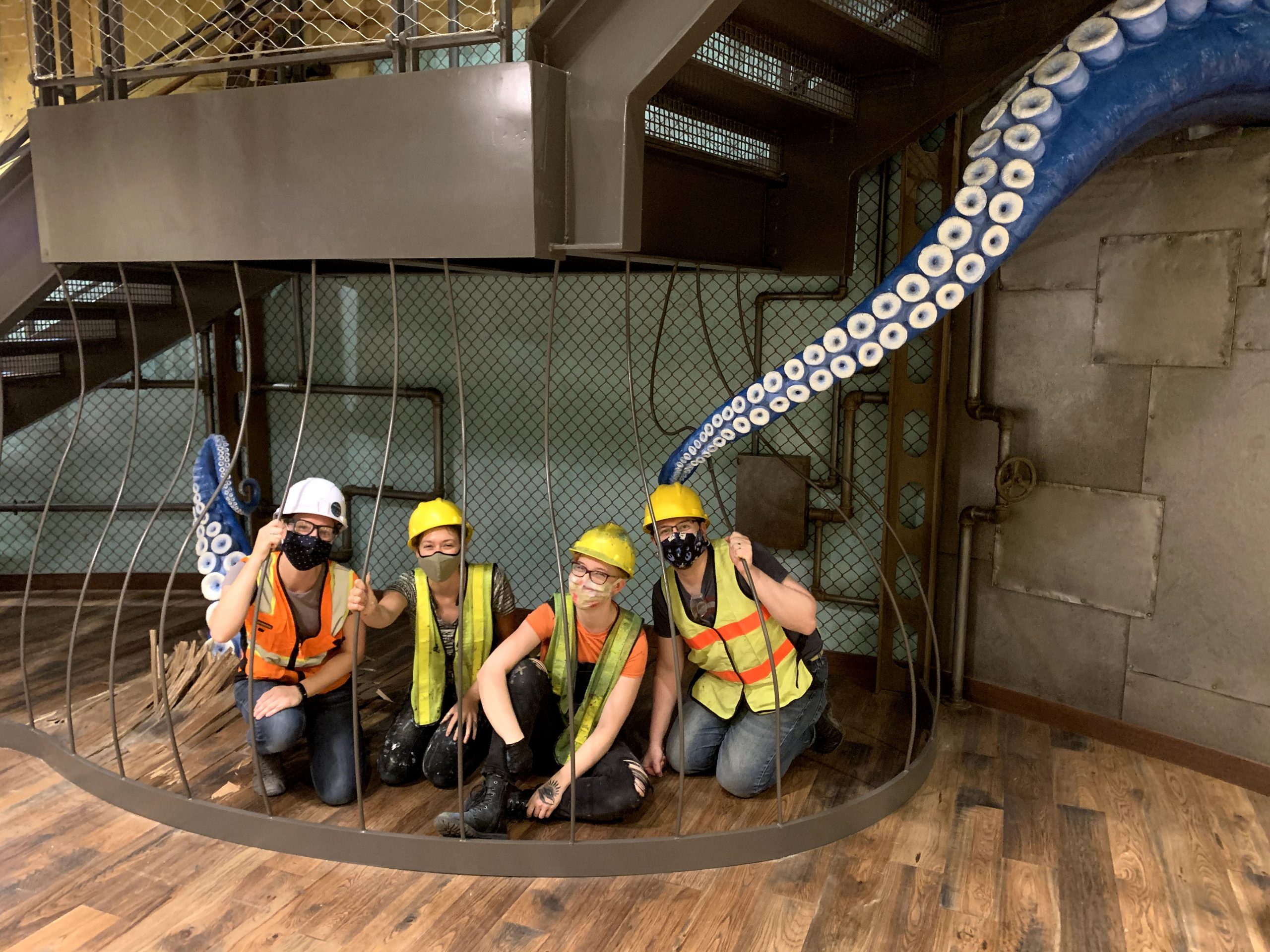It has become clear that the impact and the need to change how we work because of COVID-19 is going to be part of our businesses for a long time. To keep businesses operating through the pandemic, we have seen many organizations shift to working at home. Unfortunately, the work of Ravenswood Studio, exhibit fabrication, cannot be done from home. Through careful consideration and protection systems in place, we are finding safe and effective ways to continue supporting our clients and projects through the pandemic. This includes continuing to design, build, install and remove exhibits, themed environments, and set construction.
Ravenswood Studio has adjusted the way we work in many ways: more video meetings, client “virtual” shop visits, multiple health screenings throughout the day for our staff, and staggered shifts to name a few. Changes also include how we prepare for our team to be on-site for installation, and developing new protocols and practices on-site that ensure our crew and our clients are as safe as possible.
Here are a few things to consider for your team as projects move towards the final steps.
Be Prepared Before You Go
At this point in the pandemic, you probably have a plan for your day-to-day operations for in-office work, but what about when you leave to visit the job site? When it came time for Ravenswood Studio’s first installation since COVID-19 started, we developed a plan for how to keep our staff safe on-site.
Each morning, on arrival, crew members fill out a health screening on a smartphone app called Health Champion (the same is required for entry to our shop). Crew members are also required to document their temperature on the app, and this is then reviewed by their project site Job Lead prior to beginning their shift. Staff are also equipped with proper PPE and individual bottles of water to stay hydrated, in addition to standard safety necessities. As these supplies can be used quickly, it is important to plan ahead and order enough PPE to last the entire installation time period.
Communicate with Other Trades about Your Protocols
Other trades on-site may have different rules than your own. Some may be stricter; some may be a little more relaxed. The most important thing is that everyone feels safe, so concerns and uncomfortable feelings do not delay the job progress.
As a team who is often leading and collaborating with other trades on-site, we highly recommend meeting with the client and other trades to agree on a set standard of safety precautions. If everyone has the same expectations, they can properly prepare their teams to meet safety protocols on-site. A big part of what might influence your decision are the current rules of that municipality.
Become Familiar (and Keep Up with) Onsite Area Policies
One of the trickier things about COVID-19 is that policies and protocols are not universal. Some states, and even cities, have different rules about who can travel in and out of the area, various regulations for PPE, and even curfews for when people can be out and about. Other places have less stringent restrictions.
Regardless of what rules your home base government is imposing, there is no guarantee that the project’s on-site area has the same policies. Take the time to research the appropriate local rules before traveling, including if COVID-19 testing is required for entry, what the public PPE expectations are, and if there are travel restrictions for entering or exciting the area. Designate someone to keep up on these area policies, as they change frequently.

If Possible, Try to Stagger Trades to Limit Contact
If there is a large cluster of people, and someone ends up testing positive, it could eliminate an entire crew and delay the project even more. One of the best ways to keep your team safe is to control and limit the number of people who are around each other. As part of your pre-installation communication with the client and with other trades, see if there are ways to keep production going in a timely manner with trades staggering in working areas and timing. While this might create a longer timeline for finishing the project, it does help minimize risk.
Have a Plan for Staff to Return Home
Your staff has had a successful installation and is ready to return. What does your crew’s return look like? Do they need quarantine for a specific amount of time? Do they get tested? Deciding on a re-entry plan is important to ensure the safety of staff members who have traveled and the staff they may come in contact with when they return.
When creating a return policy there are few things to consider: What were the positive COVID-19 case numbers of the area from which they are returning? Who did they interact with besides each other while traveling? Determine if a quarantine or a test is necessary.
Explore Virtual Options
Some of our clients are choosing a more virtual and local approach to installation and removal. Recently, Ravenswood Studio conducted a successful virtual exhibit removal of Numbers in Nature at the Frost Museum of Science in Florida.
Ravenswood has been installing, removing, and shipping Numbers in Nature for several years with the same job lead, Jaime Guiscafre. Jaime and Ravenswood worked closely with exhibit owner, Museum of Science & Industry, Chicago, the Frost Museum of Science, and Tanata Productions who hired a local crew to create a plan for the removal, crating, and shipping of the 8,000 square foot traveling exhibit. Jaime spent two weeks virtually meeting with the crew beforehand to go over drawings and to discuss best practices for removing the exhibit with a team who had never worked with it before.
Once deinstallation began, the on-site crew set up a network of cameras, microphones, and speakers to communicate with Jaime virtually. If the crew had questions, or an issue arose, Jaime could easily see the exhibit and respond immediately through the live video system. The removal and shipping of the exhibit went well with no major issues, and a minimal impact on timing.
Ravenswood has also developed virtual shop visit systems to safely collaborate with our clients across the country. In working with our clients on remote approval for prototypes, interactive development, touch screen placement, and more, we have installed cameras or tablets that connect to video conferencing software in the shop. Our clients can virtually examine elements of the exhibit, give live feedback, and make approvals.

Ravenswood Studio is committed to continuing to be COVID-19-free with responsible staff and the best practice protocols and processes that keep our teams safe. We believe the safety of our staff must come first, while still be able to bringing exciting experiences to the world. Take the time to do your research, make a plan, and don’t be afraid to reinvent how you work (safely of course).
Would you like to learn more about our COVID-19 policies and how we are successfully continuing to safely fabricate, install, and ship projects? Email us at hello@ravenswood.com for more information.

